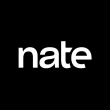Blog: Why I Can’t Toss My Checkbook
 By Loraine DeBonis, Editor-in-Chief
By Loraine DeBonis, Editor-in-Chief
It’s 2015, and we all know the pace of change in payments is unprecedented. When I look at the flurry of activity in 2014, I’m thrilled about more consumers and businesses using electronic payments in the year ahead. But, I must confess, I still have a personal payments issue. That is, I’ll be writing at least three checks a week in 2015. My twins go to an in-home babysitter, my 4-year-old goes to a preschool that doesn’t accept card payments and weekly house-cleaning calls for yet another check. Writing three checks each week is 156 checks per year too many.
| For P2P to take off, the setup and actual experience of sending and receiving money must be simple, acceptance must be ubiquitous and consumers must feel secure and—here’s the big one—that it’s worth the effort to change their habits. |
I long for an electronic solution, so I’ll be watching P2P developments closely. Many P2P options launched or gained ground in 2014 from a variety of providers, including banks, retailers, tech companies and startups, but the business model is still emerging. To attract users, many providers are offering the service for free. But revenue aside, there are some sizable stumbling blocks to widespread adoption—trust, ubiquity, setup challenges and, of course, changing consumer behavior. First and foremost, the people I pay must accept the payment type. I’d love to be able to split a tab or contribute to a group gift, but for me P2P is about recurring payments to individual service providers that Square and other m-POS vendors have yet—and aren’t likely—to penetrate. I tried to sign up for my bank’s P2P service a few months ago, but I found the process clunky and confusing and abandoned it. Yes, Square Cash and Dwolla are free to recipients, but is my babysitter going to set up an account and/or give her card or bank details to either company? She’d probably look at me like I had two heads. Checks—although they must be cashed and clear—work. And checks are what she’s used to receiving.
Why not pay through Gmail, some have suggested? Sounds great. But the people I pay don’t necessarily have Gmail accounts. They do have Facebook accounts, and Facebook reportedly is making plans for P2P. But millennials, I’m told, don’t use Facebook like I do, so a truly ubiquitous P2P option must work across social media. And there’s still the issue of consumer trust. Maybe the British banks have it right with Paym, which enables payments to and from bank accounts but only requires using a recipient’s mobile phone number. (Consumers still have to link said mobile number to a bank account for it to work.) Although the banks had signed up 500,000 users a month after launch, experts say security concerns could hinder consumer adoption.
For P2P to take off, the setup and actual experience of sending and receiving money must be simple, acceptance must be ubiquitous and consumers must feel secure and—here’s the big one—that it’s worth the effort to change their habits. Until then, I’ll keep ordering paper checks through my bank’s mobile app.
I’d love to hear about your experiences with P2P and/or if you have a solution that can help me ditch checks in 2015.
Loraine DeBonis is the editor-in-chief of Paybefore. She has been covering prepaid and emerging payments since 2007. She can be reached at [email protected].











































